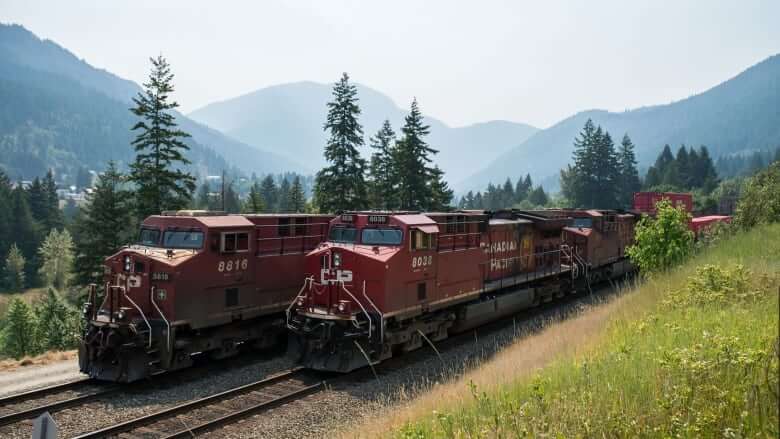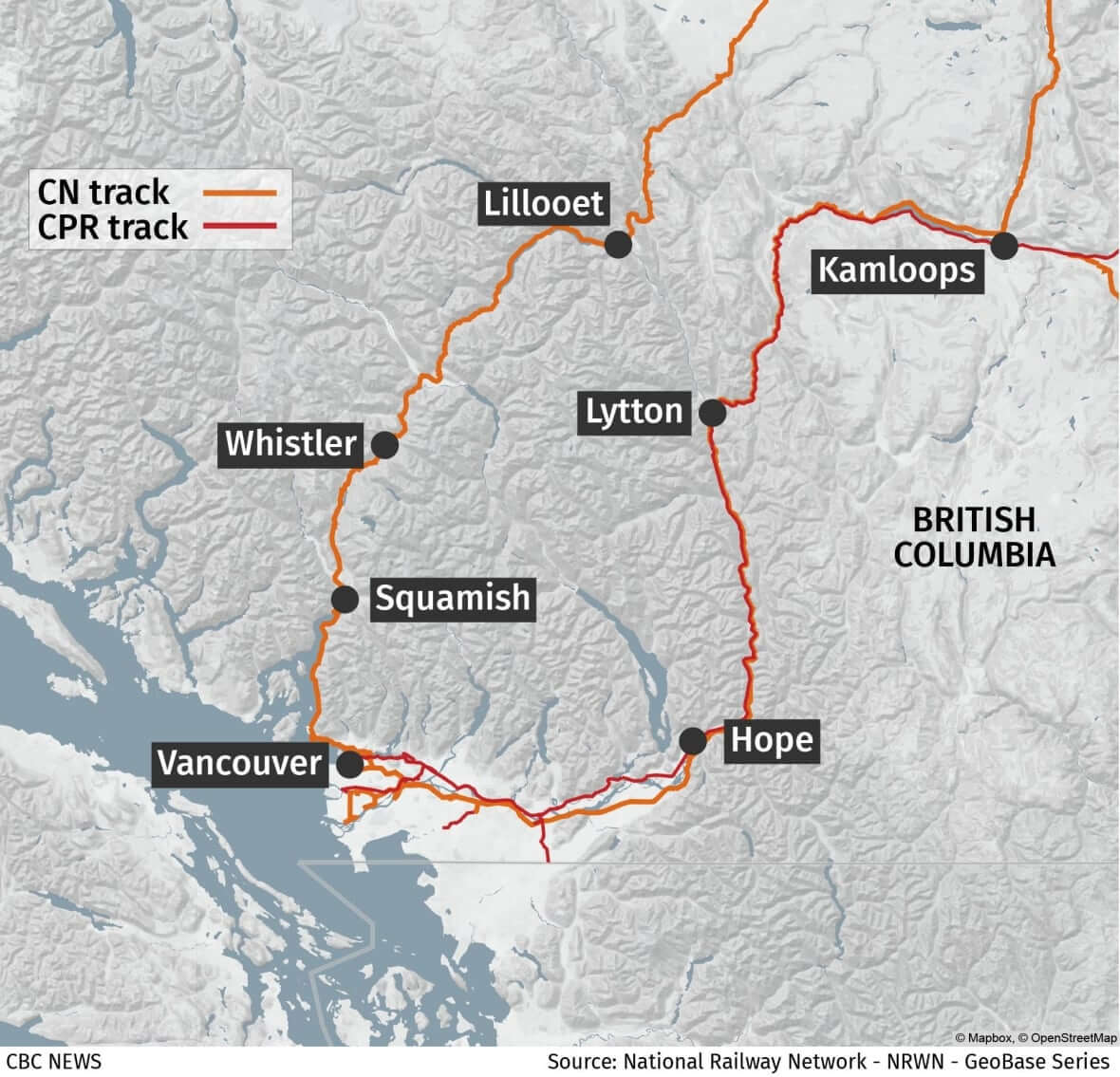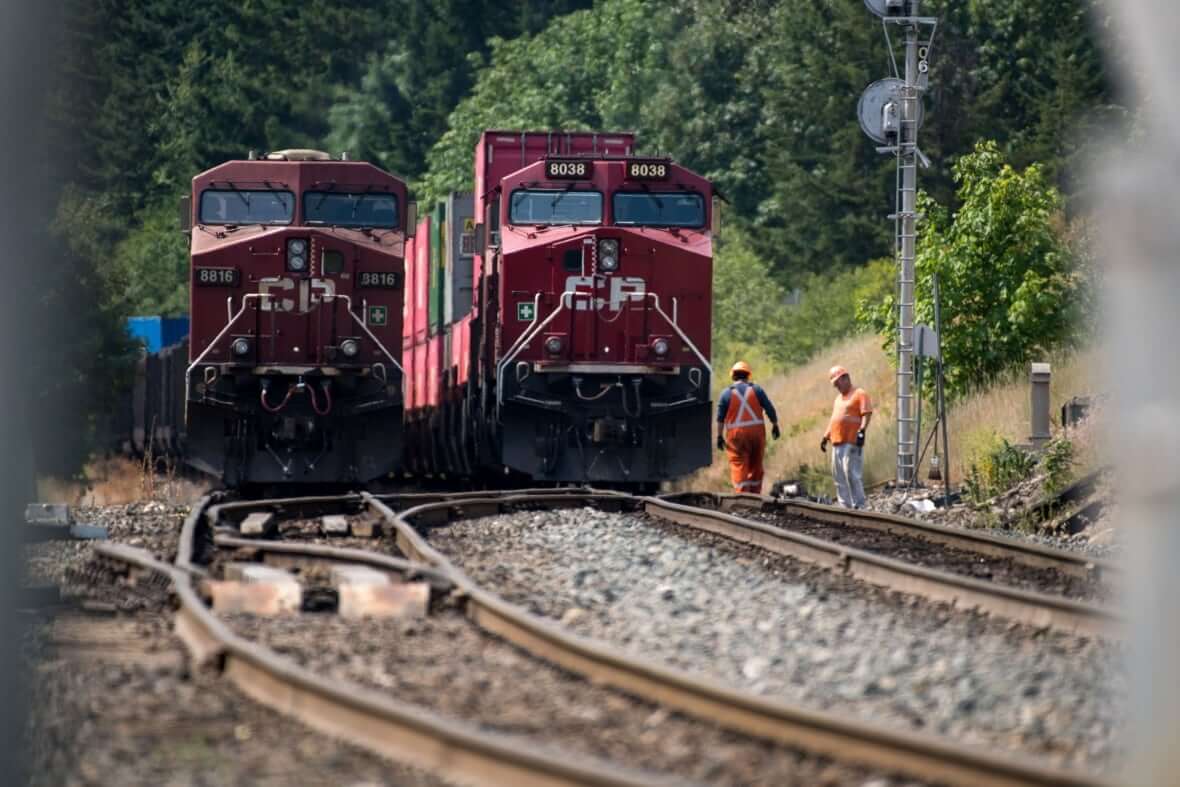B.C. wildfires damaged key rail lines, backlogging Canada’s freight supply chain

Wildfires burning across British Columbia damaged rail lines and brought train shipments to a grinding halt, causing a backlog of deliveries of all sorts of freight that is only now starting to slowly clear.
More than a billion seashore animals may have cooked to death in B.C. heat wave, says UBC researcher
Rail giants CN and CP warned their customers earlier this week that fires damaged major rail lines in the interior of the province, making them unsafe to use. That caused trains to back up along the network, idling thousands of rail cars and stranding their contents.
Canadian miner Teck Resources said it expects it to sell as much as 500,000 fewer tonnes of steelmaking coal due to the rail disruption, as it can’t get its product efficiently to customers.
CN told its customers in a bulletin earlier this week that all intermodal traffic (transport between trucks and trains) and carload traffic north and eastbound from Vancouver was affected by the wildfires, as was traffic coming into Vancouver from east and north of Kamloops, B.C.

The rail carrier said an embargo had been issued forbidding it from sending any more rail traffic “westbound to Vancouver from northern B.C., and east of Kamloops and from the Vancouver area toward the East.”
Prof. Barry Prentice at the University of Manitoba, who studies transportation logistics, told CBC News in an interview that the rail blockage underscores how vulnerable Canada’s economy is to infrastructure breakdowns.
“There are choke points where if something fails, the whole system stops,” and the area with the most fire damage, at the top of the Fraser Canyon is one of them, he said. Both CP’s and CN’s lines in the area are “both close together so if there’s a problem there, they’re both affected,” he said. “And if they’re both affected, it’s virtually the entire system.”
“When you get a holdup like this and you get a backlog, it takes a long time for that to be incorporated into the stuff that’s also coming because nothing stops coming,” Prentice said. “If you dam up a river, it’s going to build up behind it.”
At the peak, more than 4,000 rail cars of crops were marooned because of wildfires, according to the Ag Transport Coalition, a group that speaks on behalf Canadian wheat, soy and canola producers.
A fire in Lytton, B.C., virtually wiped the small community off the map last week, just days after the town broke the country’s temperature record at more than 47 C.
The growing backlog of rail cars “are a direct reflection of the mainline outages experienced by CN and CP west of Kamloops due to the wildfires, most notably at Lytton, BC.,” the coalition told Bloomberg.
It noted that recovery will be slow going and that it’s “not unreasonable to think a return to ‘normal’ could take weeks.”
The number of rail cars offloaded on Wednesday was about 90 per cent below the average daily level seen the week before, the group said.

Entire system ‘pretty congested’
The rail backlog impacted containers trying to make it to West Coast ports for export, but also shipping containers coming in. Some shipping traffic has been rerouted away from Vancouver to avoid the jam.
Bulk carrier Nikiland was headed for Vancouver before suddenly changing its destination early Wednesday and heading north to Prince Rupert, B.C., which is connected to a different rail network that is so far not impacted by fires.
As of Thursday morning, the Nikiland was just off the coast of Prescott Island, about 20 kilometres outside Prince Rupert’s main port, Bloomberg data shows.
Lotus Terminals Ltd., a shipping and logistics company based in Surrey, B.C., that specializes in intermodal transport, says the entire system is “pretty congested.”
Large importers such as retailers may have as many as 1,000 train cars full of product stuck somewhere along the system.
“Some freight is trickling through, [but] they have to find a way to transload it through the rail network to central Canada so it’s a big deal,” a spokeperson for the company told CBC News in an interview.
Backlog now moving slowly
As of Wednesday, CP Rail said in a customer bulletin its line was back open but that it would take some time to get things moving normally again as “the backlog is significant.”
“Customers may expect delays of 72 to 96 hours from start up.”
The Port of Vancouver said that as of Wednesday evening, rail lines in and out of the port are “cleared and operational,” but there’s still a large backlog of containers trying to get in and out of the port, mostly on the shipping side.
“Due to disrupted rail services, demand for large vessel anchorages currently exceeds capacity,” the port said.
In Surrey, Lotus says it will take time to move the backlog.
“We will be slower this week, but we will be twice as busy probably as soon as it starts going,” the company told CBC News.








Redes Sociais - Comentários